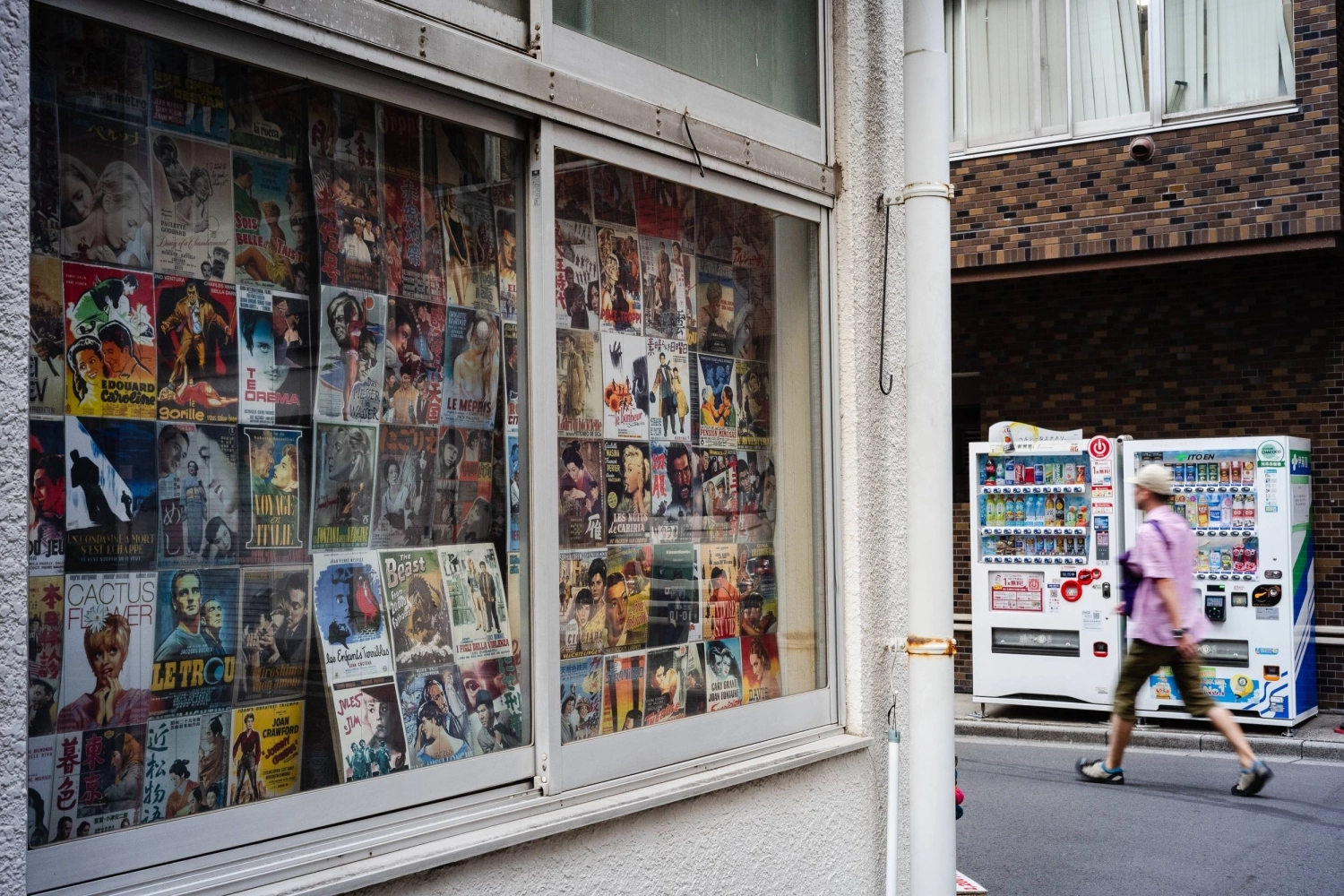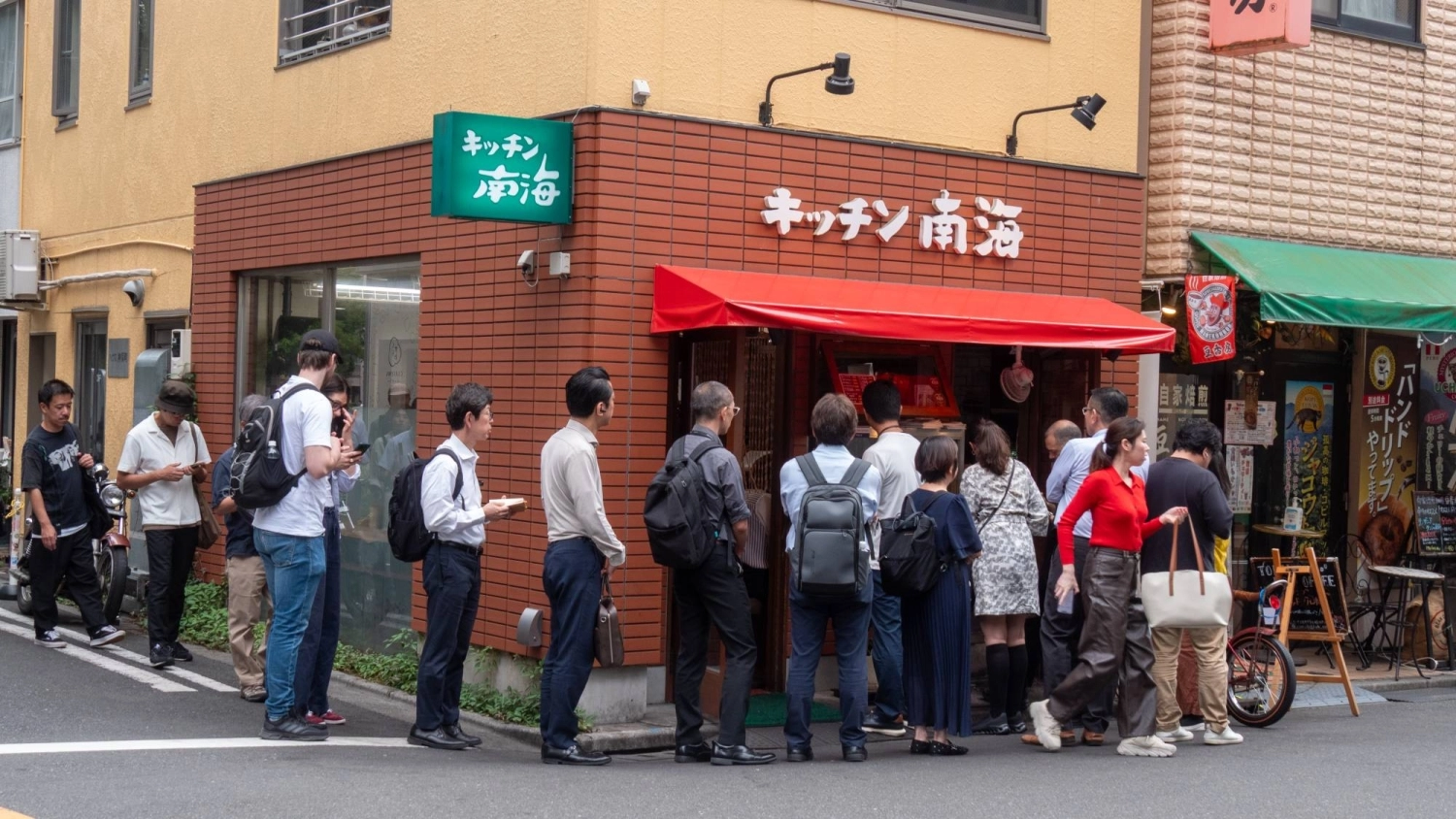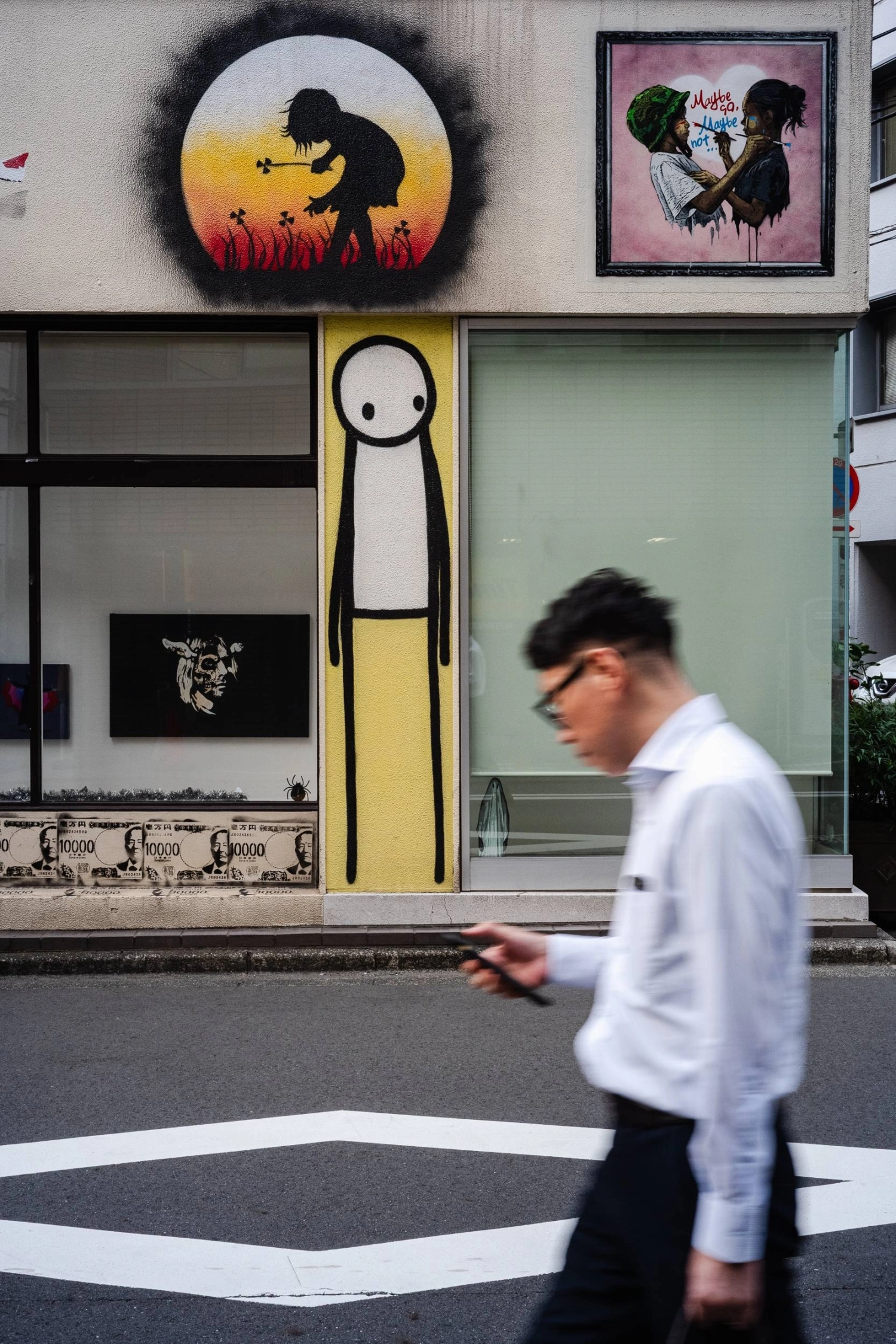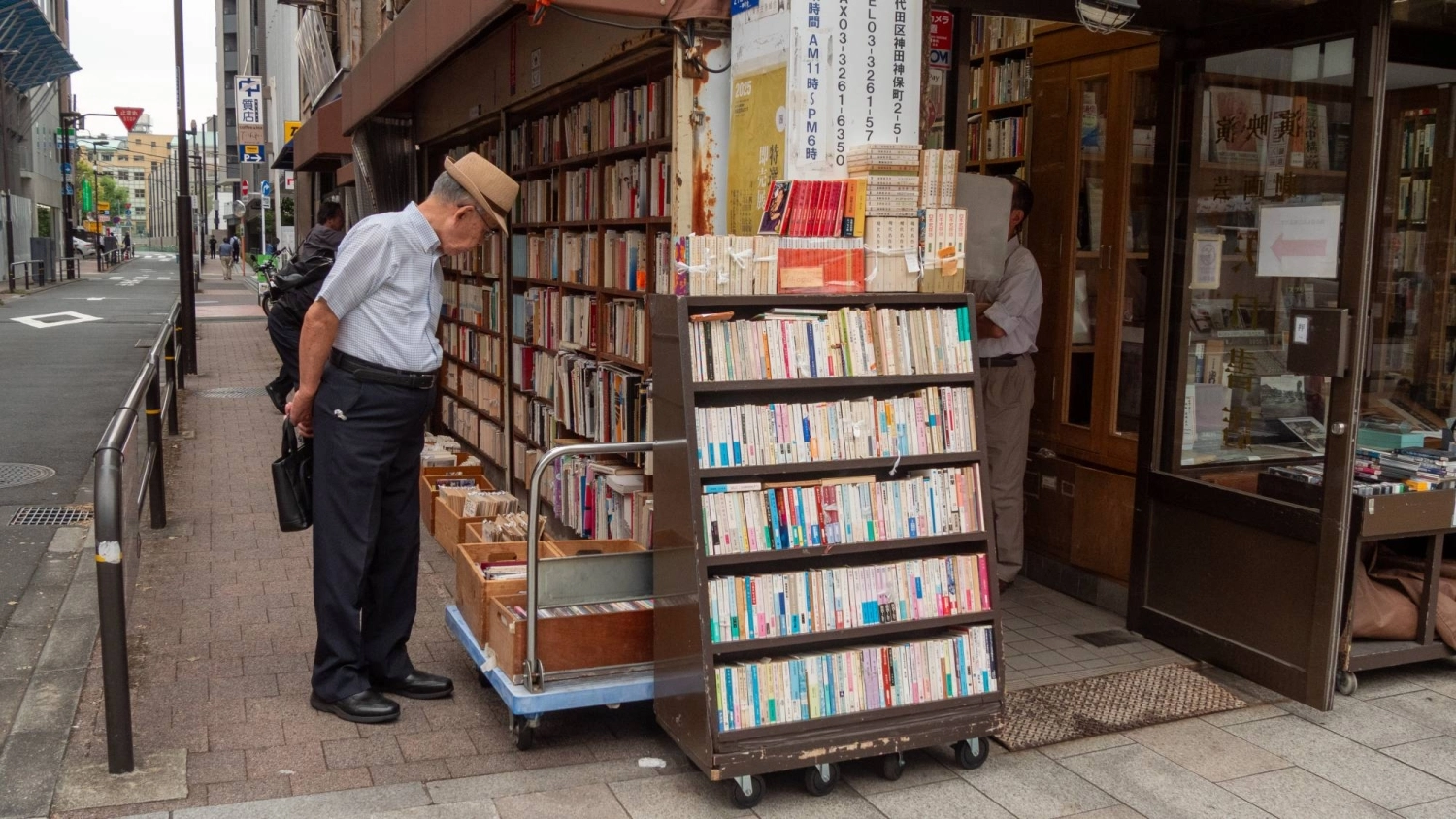Known for its secondhand bookstores and curry shops, Jimbocho hasn’t traditionally topped tourists’ lists — but that could soon change. Time Out magazine recently declared the area the “world’s coolest neighborhood” — much to the surprise of Tokyoites.
“I’m very happy, but it was unexpected,” says Michiaki Kamoshida, a bookseller at Honmaru, a shared bookstore where individuals or corporations rent a bookshelf and curate their own collection. “Books aren’t really getting that much attention these days, even globally. Especially in Japan, the publishing industry isn’t doing that well. So I was very surprised to see this book town getting attention.”
He is not alone in his bemusement.
“Jimbocho isn’t a big neighborhood,” says Akiko Nabeto, deputy manager at Bumpodo, an art supply store founded in the area in 1887. “It only takes about 10 to 20 minutes to walk around it. It’s amazing that it’s No. 1.”
While the growing number of internet listicles and attention-grabbing headlines have been known to lift a cynical eyebrow or two, there’s no doubt that the neighborhood exudes a certain retro charm, offering a window into the past but also opening the door to something new.
Time Out Tokyo & Osaka Deputy Editor Ili Saarinen was part of the team that nominated Jimbocho for the global list.
“Jimbocho has, of course, long been the top area for Tokyo’s bookish crowd and it has retained its distinctive vibe wonderfully in a city where change is the only constant,” Saarinen said in an email to The Japan Times. “But the neighborhood now appears to be reinventing itself from the ground up with an influx of new, independent businesses from music clubs to artisanal cafes and hidden bars, quietly turning into an alternative nightlife destination.”
A visitor exiting Jimbocho Station onto the main thoroughfare of Yasukuni Street will find the south side lined with secondhand bookstores. Most have piles and stacks of their offerings outside, creating an overall effect that is part-shopping street, part-museum of an analog era. The area is also home to countless curry stores — from Japanese to Sri Lankan — and coffee shops for every taste and mood. Saboru, a 70-year-old retro kissaten (cafe) popular for its pizza toast, is only a stone’s throw from newcomers Cafe Ataraxia, playing classical music on a gramophone, and Dill Coffee Parlor, which serves one of the best carrot cakes in town.
A book town with deep roots
Tatsuro Watanabe, a professor at Senshu University’s School of Commerce, studies the formation and transformation of Tokyo’s bookstore district. He says it’s important to understand the neighborhood’s diversity.
“The town is home to a kind of ecosystem. People live here, work here and study here. Besides books, there are restaurants, cafes, galleries and other cultural spaces,” Watanabe says. “At first glance, it may look like it hasn’t changed for a hundred years, but if you look closely, it’s constantly changing.”
Jimbocho’s identity as a book town took shape in the late 1800s, when the rise of nearby universities spurred demand for textbooks and secondhand titles. This led bookstores and publishers to set up shop nearby. As the area’s reputation grew, the cluster of stores continued to grow. Many bookstores specialized in a particular field, leading to friendly cooperation and producing a kind of “mutually supportive relationship” that Watanabe says has only grown stronger in the postwar years.

Jimbocho’s identity as a book town took shape in the late 1800s, when the rise of nearby universities spurred demand for textbooks and secondhand titles.
| JOHAN BROOKS

While Jimbocho’s many bookstores provide the greatest draw, the area’s other stores, restaurants, bars and cafes come together to make a thriving neighborhood.
| PHOEBE AMOROSO
This relationship may now become even more important as bookstores face intense competition from the online marketplace. So far, Jimbocho has managed to buck the nationwide trend of decline. Booksellers in the area have come together to promote the book image of the town. Some of these efforts started decades ago — The Kanda Secondhand Book Festival marks its 65th edition this autumn and features about 100 participating shops, hundreds of wagons crammed with books, and large on-street sales that bring massive footfall to the area.
A more recent initiative is Nihon no Furuhon-ya, an online platform for used bookstores founded by the Tokyo Association of Dealers in Old Books that connects shops all over Japan and allows users to see what’s available and where. “For customers, this is a huge improvement,” Watanabe says. “Many secondhand bookstores are small with stock scattered across warehouses, so having everything digitally cataloged is very convenient.”
Stores in Jimbocho also face the same threats of online shopping and remote work that are overshadowing city centers globally, creating an acute need to offer services and experiences that draw people to spend time in an area. New stores in Jimbocho are increasingly embracing diversification and a multipurpose approach. For example, Stacks, an independent book and zine store focused on street culture, also has a small bar serving craft beer and hosts fashion pop-ups. Then, there’s Yon, which offers curry on its first floor, an art gallery on the second floor and a listening room and DJ event space in its basement.

Jimbocho has a reputation for being warm and welcoming.
| JOHAN BROOKS
Both exude an abundance of cool but they also build on the community feel of the neighborhood; Jimbocho has a reputation for being warm and welcoming. Newcomer Tomoko Miyamae runs a “femtech” store that was denied rental space in multiple locations after several landlords refused to rent to her because her product lineup includes sex toys for women. She was finally granted a bright corner spot in Jimbocho.
“I really like the people here,” she says. “I interact with the locals. The elderly residents, for example, greet me when they pass by. I think everyone kind of knows each other’s faces, and I like the homely, familiar atmosphere.”
Change on the horizon
There are fears, however, that Jimbocho’s distinct character might not last forever. The pace of turnover of store ownership is increasing, as is the rent. Not only are developers eyeing prime real estate but, as Watanabe notes, redevelopment of the area is necessary, with many of the postwar buildings not meeting modern earthquake safety regulations.
Locals aren’t staying quiet about how this will play out — and this community spirit is another reason the neighborhood won over the Time Out team. Longtime residents remain concerned, though, with some complaining about insufficient explanations and involvement in the planning process.
Watanabe is also wary of imagining a notion of a cohesive neighborhood mission.
“People here are quite independent-minded. They don’t tend to unite as one large group with a single leader,” he says. “Instead, there are many leaders — the town is divided into multiple overlapping communities. Even among the secondhand bookstores, some are closely connected while others operate independently.”
United or not, there are strong feelings among locals regarding preserving the area.
“As someone who was born and raised here, I care deeply about the neighborhood and I’m very happy that many people have come to know about it,” says Rika Kitazawa, the fourth-generation owner of Kitazawa Books, which specializes in rare titles from abroad. “If we can all work together to protect this culture, I think we can pass it on to the next generation.”

Tokyo’s book town has an atmosphere that blends a bustling shopping street with a museum of the analog era.
| JOHAN BROOKS

There are fears that Jimbocho’s distinct character might not last forever.
| PHOEBE AMOROSO
Jimbocho’s strength lies in its whole. While the books provide the greatest draw, the area’s other stores, restaurants, bars and cafes come together to make a thriving neighborhood.
“There are 150 stores (here), but each has its specialty, so we can think of the neighborhood as a kind of department store,” says Yoshiko Imamoto, president of Book House Cafe, which specializes in children’s books. Given the original Japanese word for department is hyakkaten — literally, “100 goods shop” — it’s an apt analogy.
Moreover, Imamoto’s Book House Cafe epitomizes a bookstore that provides experiences not available at home or on a screen. Cafe seats fill the center floor, with low-rise bookshelves lining either side and offering visibility of both books and people. The entrance and backroom act as a gallery for original artworks from the children’s books on sale. Then, at night, when the store shuts for the day, the lights switch on in a tiny five-seat bar accessible only through the back door from the narrower street behind.
Jimbocho is a neighborhood that promises and delivers an element of discovery on each visit, whether through its stores, cafes or people. It invites serendipitous encounters — and, in an era where so much is meticulously planned and relegated to screens, what could be cooler than that?
www.japantimes.co.jp (Article Sourced Website)
#Jimbocho #unexpected #cool #status
